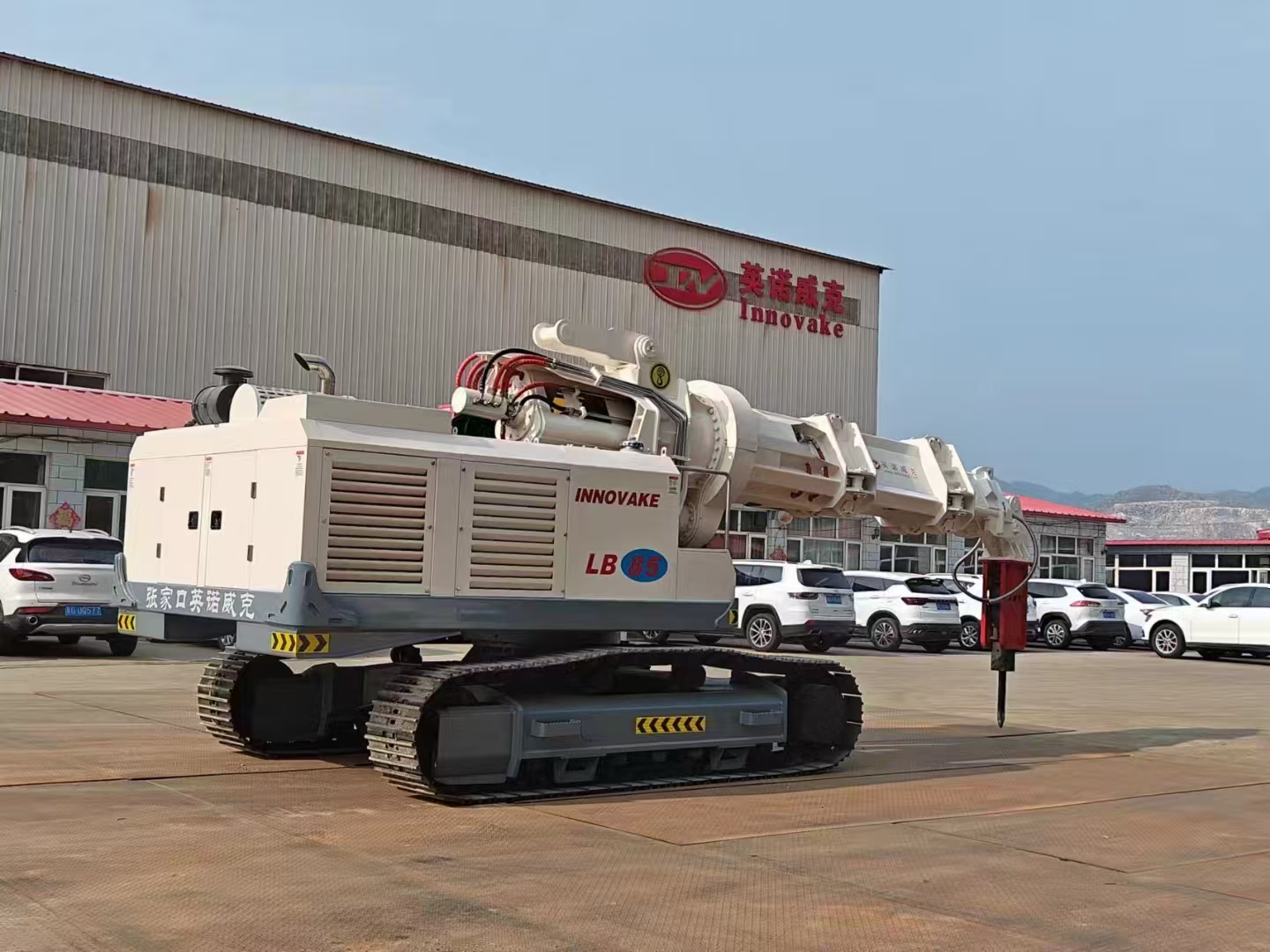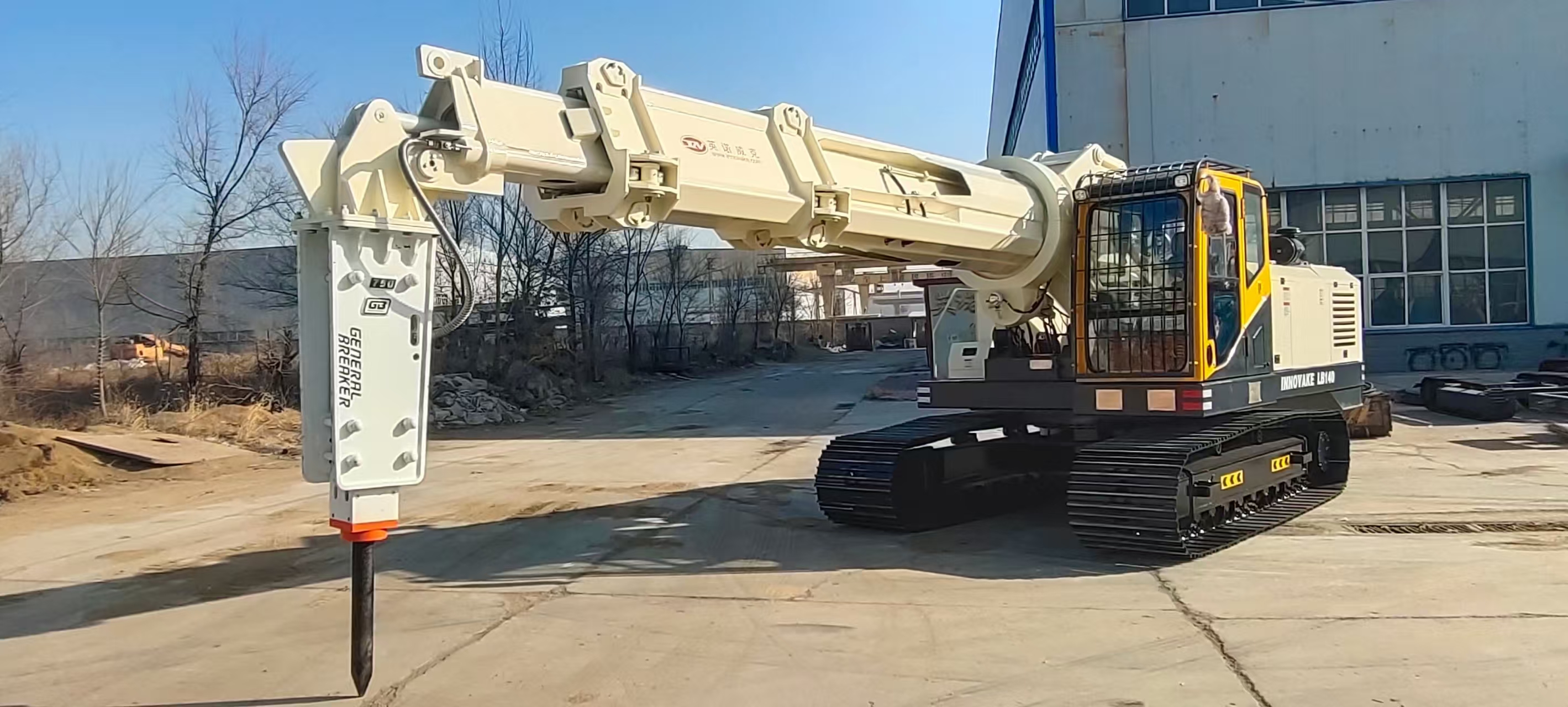Converter Debricking Machines CB108: The Backbone of Efficient Steelmaking Refractory Maintenance
In the high-temperature, high-stress environment of basic oxygen furnaces (BOF) and converters, refractory linings and tapholes endure extreme thermal shock and chemical corrosion. Over time, worn refractories and clogged tapholes disrupt production, increase downtime, and compromise safety. Converter debricking machines—specialized equipment designed for refractory removal, taphole renewal, and lining maintenance—have become indispensable to modern steelmaking, resolving these challenges through precision engineering and automation.

Core Functions: Beyond Simple Debricking
Converter debricking machines are not one-size-fits-all tools; they are modular systems tailored to critical maintenance tasks in steel production. Their primary functions include:
1. Taphole Drilling and Sleeve Renewal
The taphole is the converter’s lifeline for molten steel discharge, and its integrity directly impacts casting efficiency. Debricking machines like Zetko’s Converter Tap Hole Renewal Machine (CTRM) specialize in removing worn taphole linings and inserting new sleeves with remarkable speed. Equipped with twin drill heads and high-torque motors (4,000–9,000 Nm), these machines complete drilling in 5–20 minutes depending on site conditions . They accommodate all common taphole sleeve types—cylindrical, segmental, conical monolithic, and custom designs—ensuring compatibility with diverse converter configurations .
2. Refractory Lining Removal
For full debricking of converter interiors, advanced machines integrate telescopic booms (with 1–3 meter strokes) and interchangeable tools to break down and extract degraded refractory bricks. Models like the Sundri La, with a drill torque of 7,000–9,000 Nm, excel at this task, even in compact kiln diameters under 3.45 meters .
3. Multifunctional Attachment Compatibility
To optimize cost-efficiency, manufacturers offer attachment-based solutions like Zetko’s CTRM-A. This budget-friendly tool mounts onto existing telescopic boom wrecking machines, eliminating the need for separate dedicated equipment. With a 5-minute interchange time via mechanical quick couplers, it minimizes downtime while supporting both drilling and resleeving .
Key Technical Specifications and Machine Variants
Debricking machines are engineered to balance power, mobility, and adaptability. Leading models from manufacturers like Zetko feature standardized yet flexible parameters:
| | | | | |
CTRM (Charging/Tapping Side) | | | | Diesel/electric power; tyre/crawler mobility |
| | | | | 1–3m boom stroke; high-torque drilling |
| | | | | Quick-coupler; compatible with existing booms |

Mobility and control options further enhance versatility: machines are available with tyre or crawler tracks, cabin or remote operation, and articulating booms for access in tight spaces . This adaptability ensures they perform reliably in both charging-side and tapping-side converter maintenance .
Why Automation Outperforms Manual Maintenance
Traditional manual debricking is labor-intensive, inconsistent, and risky. Automated debricking machines address these flaws with transformative benefits:
1. Unmatched Efficiency and Downtime Reduction
Manual taphole drilling can take hours and requires multiple workers; automated machines cut this to 5–20 minutes . Quick-coupler technology (e.g., CTRM-A’s 5-minute tool changes) and 24/7 operability eliminate production bottlenecks—a critical advantage when steel mills lose thousands of dollars per minute of downtime .
2. Consistent Quality and Safety
Human error in manual debricking leads to uneven refractory removal, misaligned tapholes, and rework. Automated systems deliver micron-level precision, ensuring uniform sleeve insertion and refractory clearance . Additionally, remote operation and enclosed cabins protect workers from high temperatures, flying debris, and toxic fumes—reducing accident risks associated with manual labor .
3. Cost Savings Over the Long Term
While initial investment in automated machines is higher, labor savings alone justify the cost. A steel mill relying on 8 manual debricking workers could spend over €300,000 annually on labor; automated systems reduce this to 1–2 operators per machine . Lower rework rates and extended refractory lifespan (due to precise maintenance) further amplify ROI .
Applications Across Steelmaking and Beyond
Converter debricking machines are not limited to BOF converters; they serve a range of high-temperature vessels, including:
In rotary kilns, for example, machines like the Pneumat-O-Ring bricking system streamline refractory brick installation with pneumatic lifters and adjustable centers, reducing worker fatigue and ensuring tighter, more consistent brick rings .
Future Trends: Toward Smarter, More Integrated Systems
The next generation of converter debricking machines is evolving toward greater connectivity and customization. Manufacturers are integrating IoT sensors to monitor drill torque, boom position, and tool wear in real time, enabling predictive maintenance . Additionally, hybrid power systems (combining diesel and electric) are reducing emissions, aligning with the steel industry’s sustainability goals .
As steel mills pursue higher throughput and lower carbon footprints, the role of debricking machines will only grow. These tools are no longer just maintenance equipment—they are strategic assets that bridge the gap between operational efficiency, safety, and long-term profitability.


